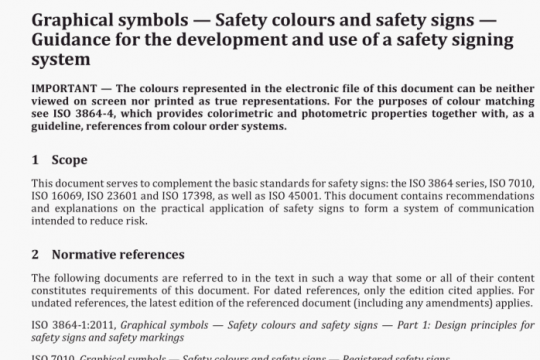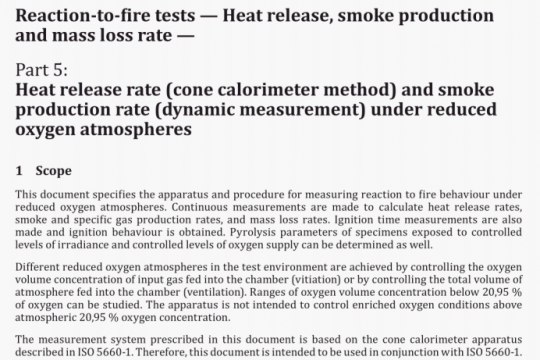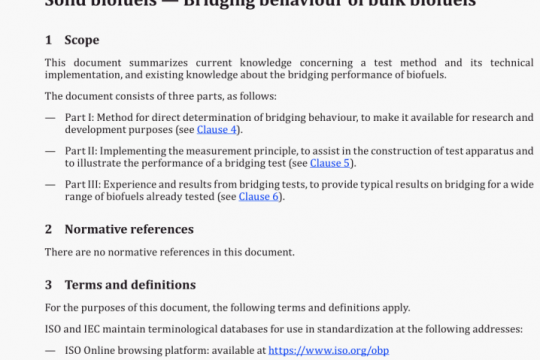ISO 44003 pdf free download
ISO 44003-2021 pdf free download.Collaborative business relationship management一Guidelines for micro, small and medium-sized enterprises on the implementation of the fundamental principles.
5.2.3.2 Assessing and maintaining alignment
The vision and values of an organization will be a factor in developing alignment and the behaviours to work together effectively.
In a collaborative model, there should be consideration as to the ability of two or more organizations to work together and the behaviours necessary to facilitate success. When working together, it is often the case that day-to-day pressures will challenge what is important to each partner. As such, it is important to regularly ensure that the values of each partner are not being compromised. As particular engagements reach their conclusion, it is important to assess whether the way in which each party’s values have been respected lays the foundation for further engagement.
5.3 Business objectives
5.3.1 What: summary of the intent
Objectives that are clear and commonly understood across the organization help engender a more efficient focus at all levels, ensuring that the collaboration’s objectives can be achieved through the relationship to support continued effective engagement at all levels and sustained mutual benefit.
5.3.2 Why: explanation of relevance
Chances of success are improved when drivers for collaboration support the business objectives of each organization. Such approaches will require effort and resources to achieve the desired goals and outcomes.
5.3.3 How: Implementation guidance
5.3.3.1 Establishing objectives
The owners and/or managers should identify the objectives of each specific collaborative business relationship. For each of them, they should define and prioritize the desired outcomes and evaluate the significant benefits and the risks that can arise. Defining the objectives for the operation and ensuring these are communicated across the organization is crucial, particularly where it can be advantageous to adopt a collaborative approach to achieve them.
5.3.3.2 Define a business case
Having defined what are the opportunities to be developed, the owners and/or managers should create a strategy and business case for each of them. This document should clearly identify the opportunity, objectives, value, risks, resources and partners for the potential collaborative relationship. The main results of this assessment for any specific opportunity should be incorporated into the RMP.
5.3.3.3 Aligning objectives for specific relationships
During the engagement process, it is important to address the objectives of each party and ensure that while these can be different, they are aligned and not in conflict. Ensuring that each partner’s objectives can be achieved through the relationship will support continued effective engagement at both organizational and individual levels to sustain mutual benefit.
5.3.3.4 Engagement process
5.3.3.5 IdentIfication of operational objectives and value
The owners and/or managers should assess their overall business objectives and the added value that a collaborative approach can support. A value analysis approach will help to focus development and
5.2.3.2 Assessing and maintaining alignment
The vision and values of an organization will be a factor in developing alignment and the behaviours to work together effectively.
In a collaborative model, there should be consideration as to the ability of two or more organizations to work together and the behaviours necessary to facilitate success. When working together, it is often the case that day-to-day pressures will challenge what is important to each partner. As such, it is important to regularly ensure that the values of each partner are not being compromised. As particular engagements reach their conclusion, it is important to assess whether the way in which each party’s values have been respected lays the foundation for further engagement.
5.3 Business objectives
5.3,1 What: summary of the intent
Objectives that are clear and commonly understood across the organization help engender a more efficient focus at all levels, ensuring that the collaboration’s objectives can be achieved through the relationship to support continued effective engagement at all levels and sustained mutual benefit.
5.3.2 Why: explanation of relevance
Chances of success are improved when drivers for collaboration support the business objectives of each organization. Such approaches will require effort and resources to achieve the desired goals and outcomes.
5.3.3 How: Implementation guidance
5.3.3.1 Establishing objectives
The owners and/or managers should identify the objectives of each specific collaborative business relationship. For each of them, they should define and prioritize the desired outcomes and evaluate the significant benefits and the risks that can arise. Defining the objectives for the operation and ensuring these are communicated across the organization is crucial, particularly where it can be advantageous to adopt a collaborative approach to achieve them.
5.3.3.2 Define a business case
Having defined what are the opportunities to be developed, the owners and/or managers should create a strategy and business case for each of them. This document should clearly identify the opportunity, objectives, value, risks, resources and partners for the potential collaborative relationship. The main results of this assessment for any specific opportunity should be incorporated into the RMP.
5.3.3.3 Aligning objectives for specific relationships
During the engagement process, it is important to address the objectives of each party and ensure that while these can be different, they are aligned and not in conflict. Ensuring that each partner’s objectives can be achieved through the relationship will support continued effective engagement at both organizational and individual levels to sustain mutual benefit.ISO 44003 pdf download.




